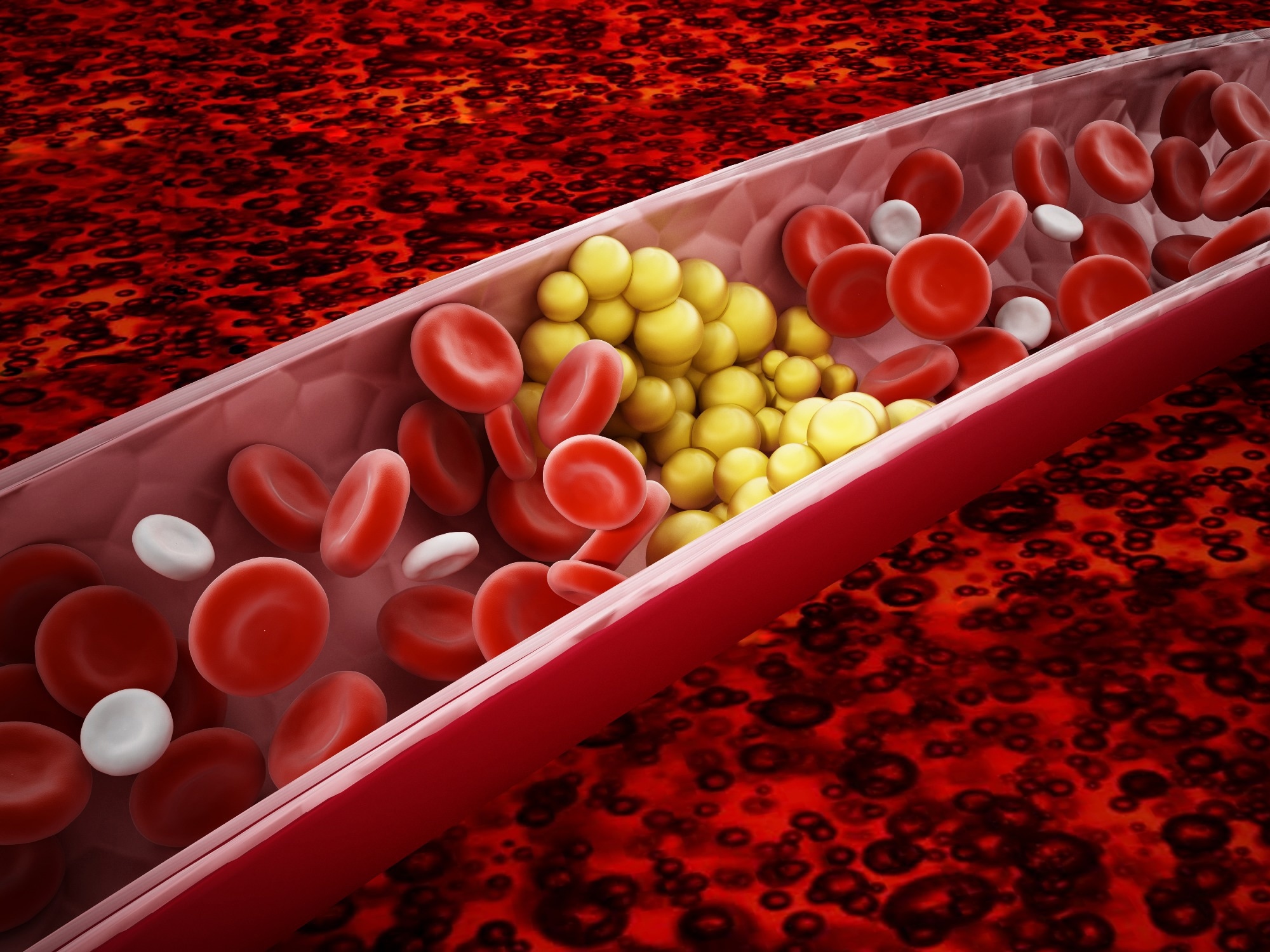The global incidence of diseases related to exposure to fine particulate matter (PM2.5) has increased significantly. Short-term exposure to PM2.5 is positively correlated with mortality associated with increased rates of respiratory and cardiovascular diseases. Nevertheless, the underlying mechanism of how PM2.5 exposure affects health is unclear.
 Study: Effects of short-term PM2.5 exposure on blood lipids among 197,957 people in eastern China. Image Credit: cigdem/Shutterstock
Study: Effects of short-term PM2.5 exposure on blood lipids among 197,957 people in eastern China. Image Credit: cigdem/Shutterstock
Background
PM2.5 exposure has been found to elevate the prevalence of the non-alcoholic fatty liver disease. Long-term PM2.5 exposure has also been linked to increased dementia occurrence among senior citizens. In older males, long-term PM2.5 exposure caused enhancement in serum triglyceride and lowering of high-density lipoprotein cholesterol levels. In children and adolescents, long-term PM2.5 exposure led to an increase in total cholesterol levels along with elevated hypercholesterolemia risk.
It is not clear whether PM2.5 exposure influences blood lipid levels. Although some evidence has been documented related to long-term PM2.5 exposure on blood lipids, no studies are available that explore the effect of short-term PM2.5 exposure on blood lipids.
About the study
A recent Scientific Reports study sought to address the gap mentioned above in research and determined the association between short-term PM2.5 exposure and blood lipids. This cross-sectional study was conducted in Yixing city, China. Patients who attended the physical examination, between 2015 and 2020, at Yixing People’s Hospital were recruited in this study, irrespective of their disease status.
Two key inclusion criteria for this study were that patients needed to be local residents and should have been tested for lipid-related indicators. The study excluded all participants who were under lipid-lowering drugs and those who were frequently exposed to dust in their line of work.
The authors obtained reports on participants' blood lipid-related indicators, such as cholesterol, low-density lipoprotein cholesterol, high-density lipoprotein cholesterol, and triglyceride. It must be noted that the blood samples of the candidates were collected after at least 8 hours of overnight fasting.
Findings
A total of 197,957 participants were included in this study, with a mean age of 47.90 years. Interestingly, 55.61% of the study cohort was male. PM2.5 was positively correlated with low-density lipoprotein cholesterol level and total cholesterol concentration and negatively correlated with triglyceride. The findings of the current study indicate the harmful effect of PM2.5 exposure on blood lipids.
Several contradictory results have been documented in previous studies that explored the impact of term air pollutant exposure on health. These differential observations are due to varied study designs and different PM2.5 exposure times. Inconsistency in research was also due to the differences in air quality and lifestyle in rural and urban areas.
The current study, using a single pollutant model, observed a negative correlation between triglyceride and blood lipid levels. In addition, a positive association between triglyceride and blood lipid levels, using a multi-pollutant model, was also revealed. However, these findings did not align with a previous study conducted in rural areas, where short-term PM2.5 exposure in rural areas was positively correlated with triglyceride concentration and negatively linked to total cholesterol concentration. These contradictory findings indicate that specific air pollutants can alter the relationship between short-term PM2.5 and triglyceride levels.
PM2.5 was found to be positively correlated with the low-density lipoprotein cholesterol concentration. A prior study has shown that short-term PM2.5 exposure was negatively correlated with total cholesterol concentration. This inconsistency with the current finding could be due to varied sample sizes and ages. In addition, short-term PM2.5 exposure was found to be a risk factor for hyperlipidemia.
The current study revealed that the impact of short-term PM2.5 exposure on low-density lipoprotein cholesterol concentration and total cholesterol concentration could be modified by age. Consistent with previous studies, the current study revealed that older people were more vulnerable to PM2.5 exposure due to hypometabolism and/or hypoimmunity.
Limitations
A key area for improvement of the current study is its time-series study format, for which the authors failed to determine the reverse causation or time-specific confounding. In addition, the use of a fixed environmental monitoring station to estimate an individual’s PM2.5 exposure could lead to a biased result. This is because a single monitoring station could not be a true representation of an individual’s total PM2.5 exposure. Another limitation of the study is the high possibility of the presence of unmeasured and residual confounding factors.
Conclusions
The authors claim this research to be the largest population-based study to investigate how short-term PM2.5 exposure affects blood lipids concentration. This study provides new empirical evidence of the impact of short-term air pollutant exposure on health. Differential PM2.5 exposure duration was found to impact blood lipid levels. Short-term PM2.5 exposure was found to be positively associated with total cholesterol and low-density lipoprotein cholesterol and negatively correlated with triglyceride.